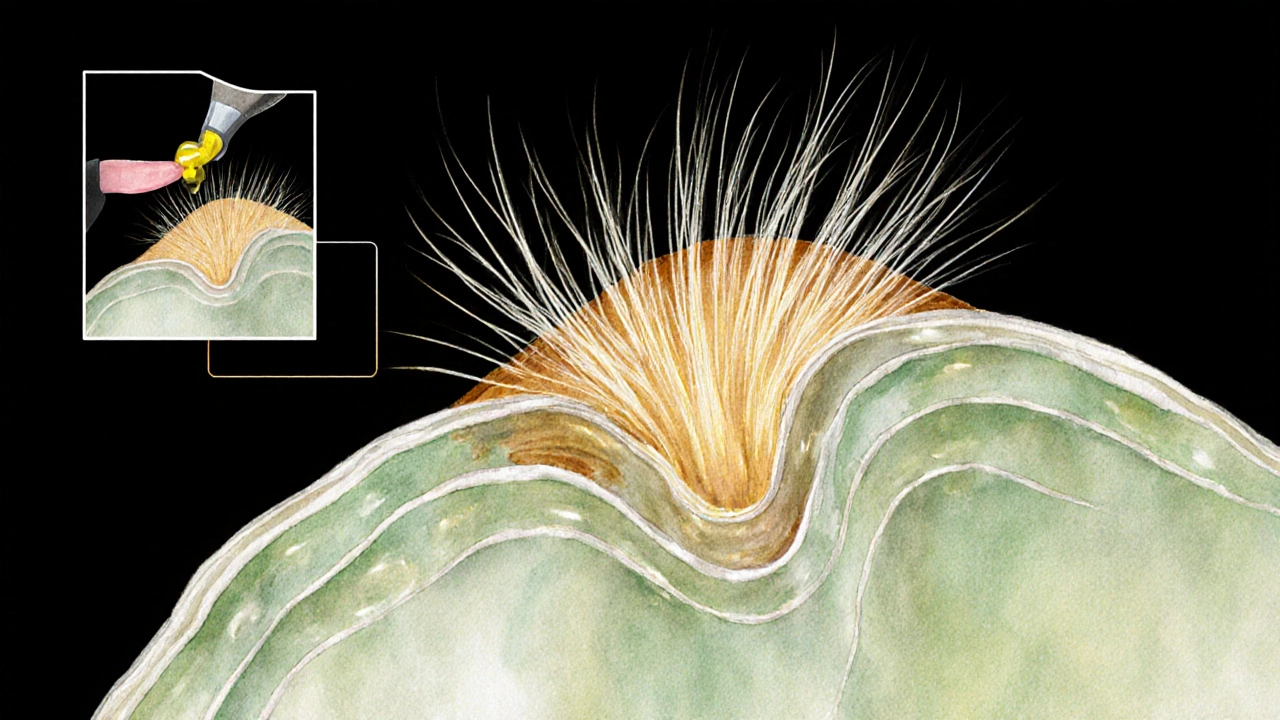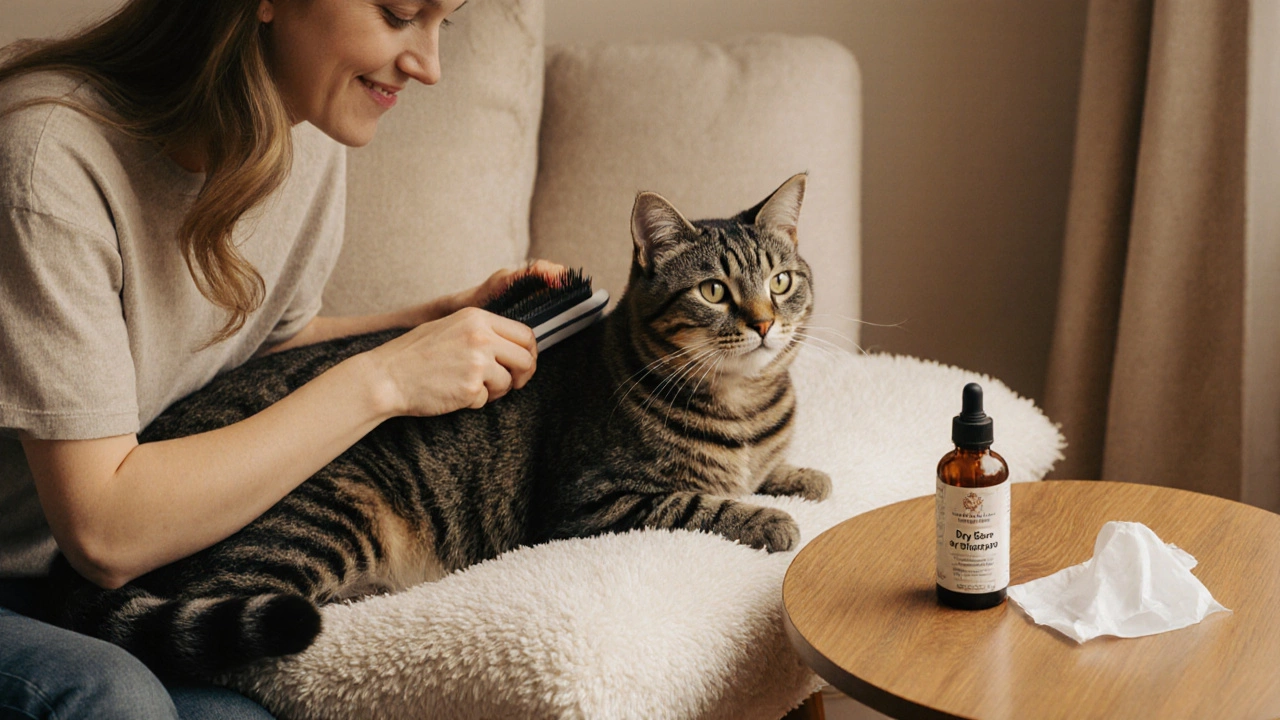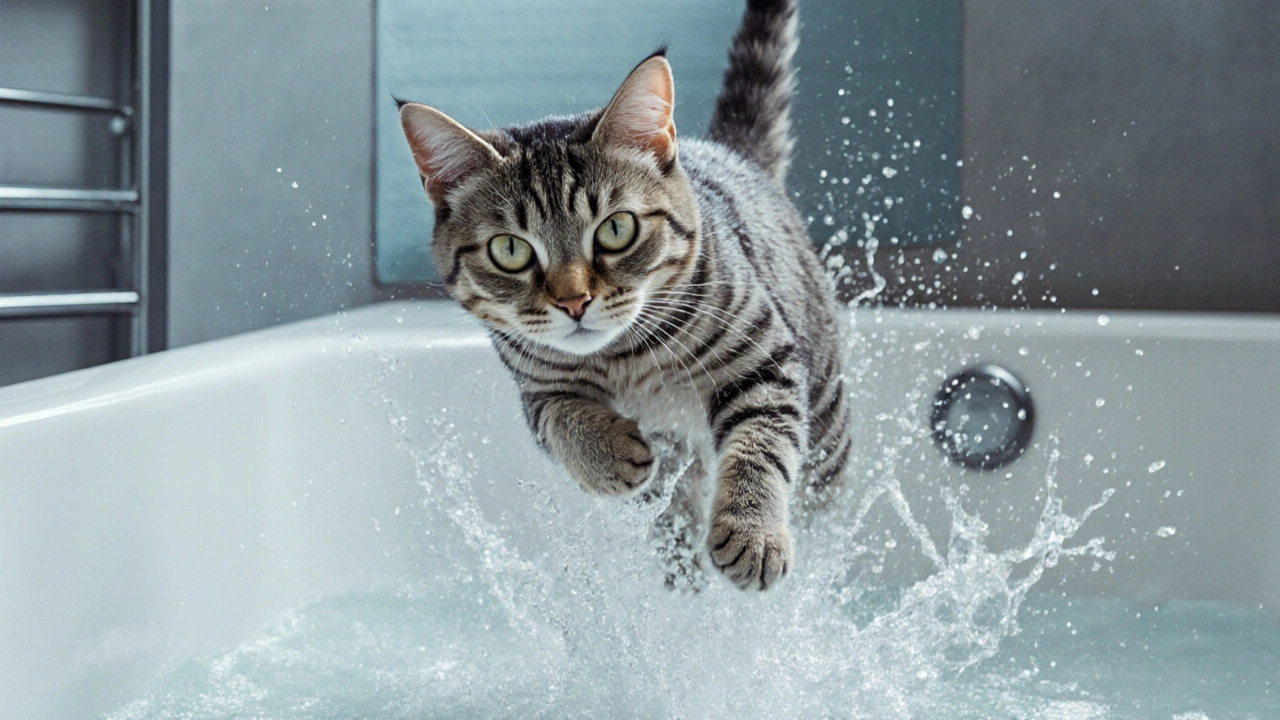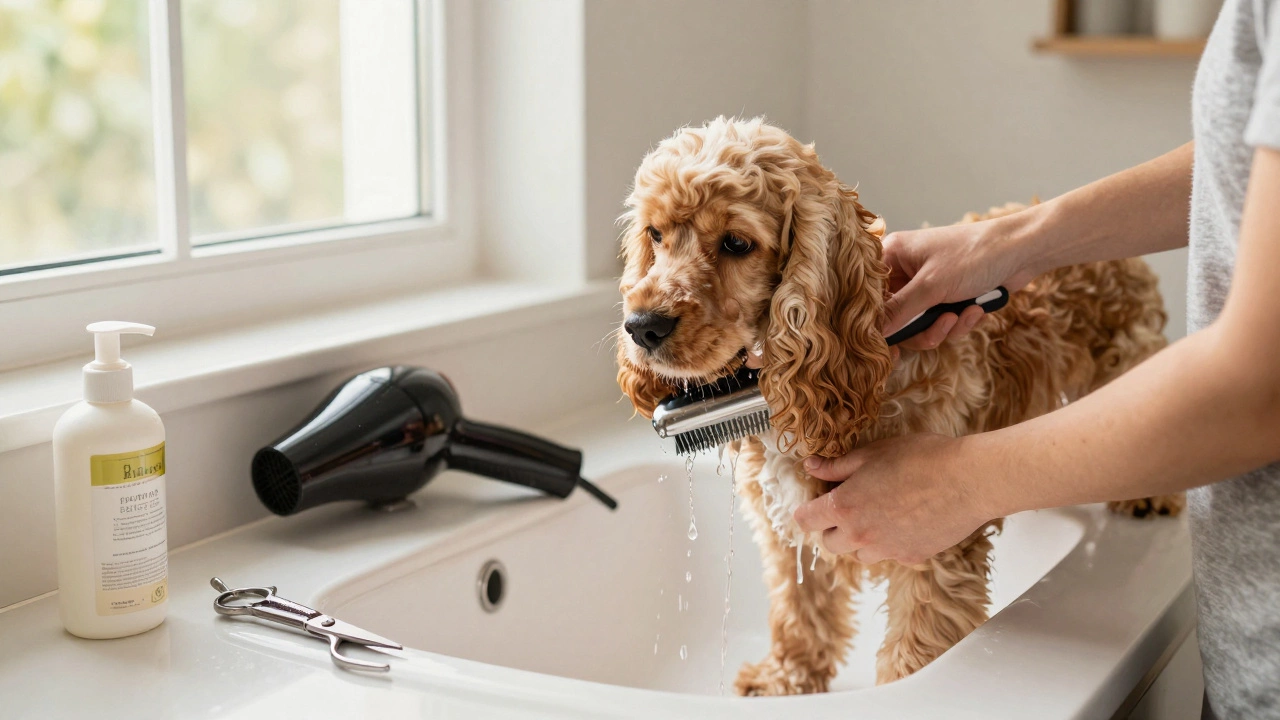Ever wondered why the internet keeps telling you that cats don’t need a bath? You might have even tried a quick rinse after your kitty got into something smelly, only to see them sprint to the far corner, eyes wide and fur standing on end. That reaction isn’t just a diva moment-it’s a real signal that cat bathing can do more harm than good.
Cat vs. Dog: Why the Same Rules Don’t Apply
Unlike dogs, who have evolved alongside humans to accept regular washing, domestic cats are born with a built‑in cleaning system. A Cat is a small, carnivorous mammal that spends up to 50% of its waking hours grooming itself. This isn’t a vanity habit; it’s essential for coat health, temperature regulation, and parasite control.
The Science Behind Feline Self‑Cleaning
When a cat licks its fur, a special oil called sebum spreads from the skin to the hair. Sebum does three things:
- Creates a waterproof barrier that protects the skin from rain and humidity.
- Provides natural antimicrobial properties that keep bacterial growth in check.
- Maintains the fluffy texture that makes a cat’s coat both insulating and aerodynamic.
Disrupting this balance by soaking the animal in water strips away the protective layer, leaving the skin dry, irritated, and vulnerable to infection.
When a Bath Is Actually Needed
Not every dirty cat needs a full‑body soak. Vets agree that a bath should be reserved for rare situations, such as:
- Exposure to substances that are toxic if ingested (e.g., certain paints, motor oil, or antifreeze).
- Severe flea infestations that topical treatments can’t reach.
- Medical conditions that impair the cat’s ability to groom, like obesity or arthritis.
Even in those cases, the goal is to minimize water exposure and use cat‑specific products.

Risks of Regular Bathing
Here’s what can happen when you turn a regular bath into a habit:
- Skin irritation: Water removes sebum, leading to dry, flaky patches.
- Stress overload: The loud splash and confinement trigger a fight‑or‑flight response. Chronic stress can suppress the immune system.
- Temperature shock: Cats regulate body heat through their fur. A wet coat can cause hypothermia, especially in cooler homes.
- Behavioral issues: Repeated bathing can make a cat avoid the carrier, the bathroom, or even the owner.
Smarter Alternatives to a Full Bath
If you’re looking to freshen up a cat without the drama, try these low‑stress methods:
| Aspect | Bathing | Dry Grooming |
|---|---|---|
| Water Use | High | None |
| Stress Level | High | Low |
| Skin Oil Removal | Complete | Partial (keeps protective layer) |
| Time Required | 15‑30min | 5‑10min |
| Best For | Sticky substances, medical needs | Odor, light dirt, shedding control |
Dry grooming tools include dry shampoo, grooming brushes, and pet‑safe wipes. They lift loose hair, absorb excess oil, and neutralize odors without stripping the coat’s natural barrier.
How to Give a Safe Bath If It’s Absolutely Necessary
Should a situation call for a genuine bath, follow these steps to keep the experience as painless as possible:
- Gather everything first: cat‑specific shampoo, a non‑slip mat, a cup for rinsing, and a towel.
- Fill the tub with lukewarm water-no deeper than the cat’s hips.
- Gently place the cat in the water while speaking in a calm voice.
- Apply shampoo only to the back, tail, and paws. Avoid the face and ears.
- Rinse thoroughly using the cup to prevent soap residue.
- Wrap the cat in a soft towel, pat dry, and keep them in a warm room until completely dry.
Never use human shampoo; its pH is too high for feline skin and can cause dermatitis.

Common Mistakes and How to Avoid Them
Even well‑meaning owners slip up. Spot the pitfalls before they happen:
- Cold water: Aim for 37‑38°C (98‑100°F). Anything cooler can shock the cat’s system.
- Using a hair dryer: The heat can scorch thin fur. Let the towel do the work.
- Rubbing the face: Cats’ eyes are delicate. Use a damp cloth for a gentle wipe.
- Skipping the post‑bath reward: A treat or extra playtime helps associate grooming with positive outcomes.
Quick Checklist: Is a Bath Worth It?
- Is the cat’s coat stuck with a toxic substance?
- Has a veterinarian recommended bathing for a skin condition?
- Can you achieve a fresh scent using wipes or dry shampoo?
- Is the cat’s stress level manageable (calm, not panicking)?
If you answer “yes” to more than one question, a bath may be justified. Otherwise, stick to dry grooming.
Frequently Asked Questions
Can I bathe my kitten the same way as an adult cat?
Kittens have even more delicate skin, so you should avoid full baths unless a vet insists. Use a damp cloth for spot cleaning and let the mother’s grooming do the rest.
What’s the best dry shampoo for cats?
Look for a formula labeled “cat‑safe,” fragrance‑free, and with natural absorbent powders like oatmeal or corn starch. Brands such as Vet’s Best and Earthbath are well‑rated.
Will a bath help with shedding?
Not really. Shedding is a natural cycle. Regular brushing removes loose fur more effectively than water, and it keeps the coat’s oil layer intact.
How often should I check my cat’s skin for irritation?
A quick visual scan during each brushing session is enough. Look for redness, dry patches, or bald spots. If you spot any, consult your veterinarian.
Is it safe to use human baby shampoo on cats?
Generally no. Human baby shampoo is formulated for human skin pH, which is higher than a cat’s. Using it can irritate the skin and strip essential oils.






